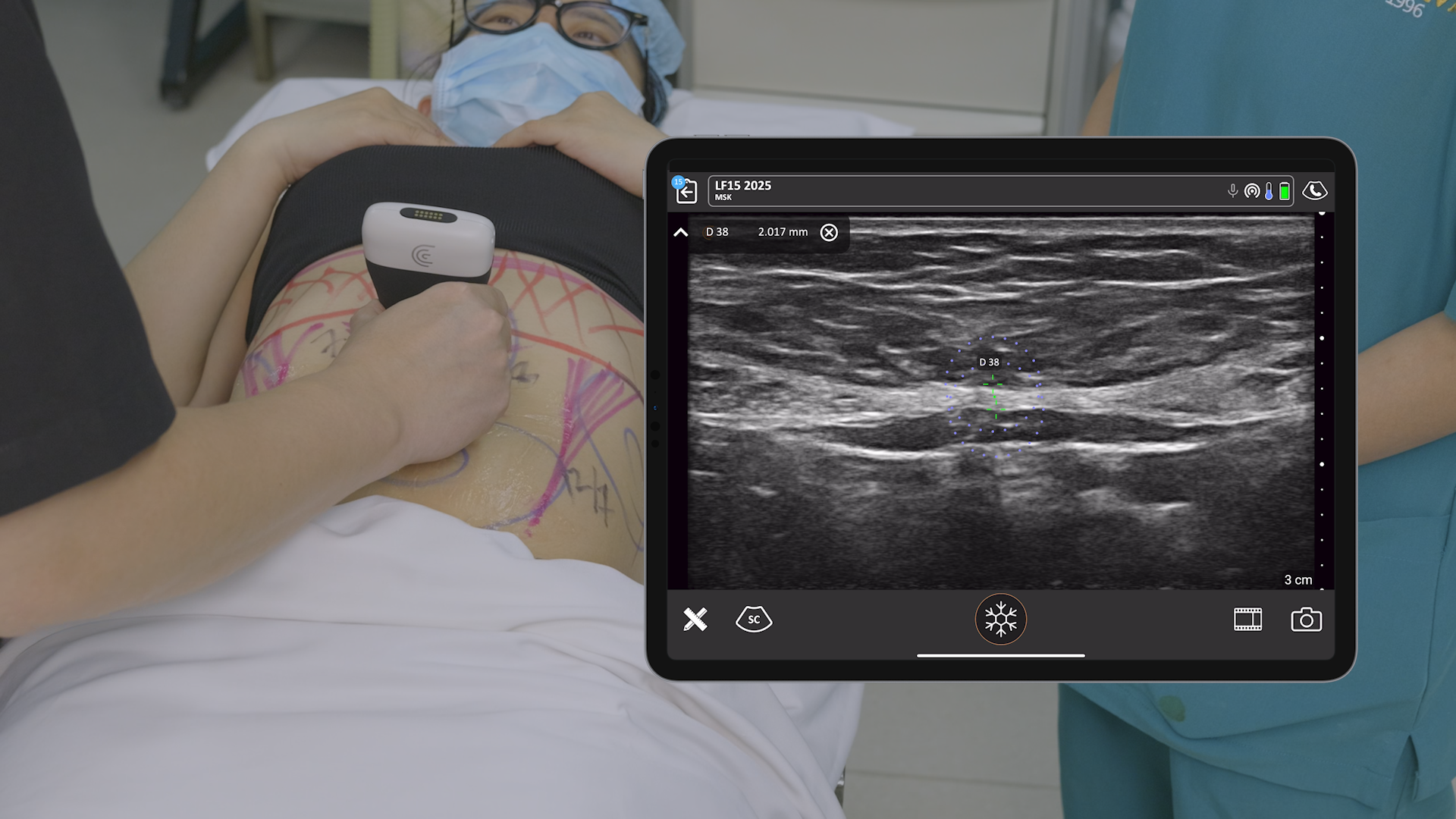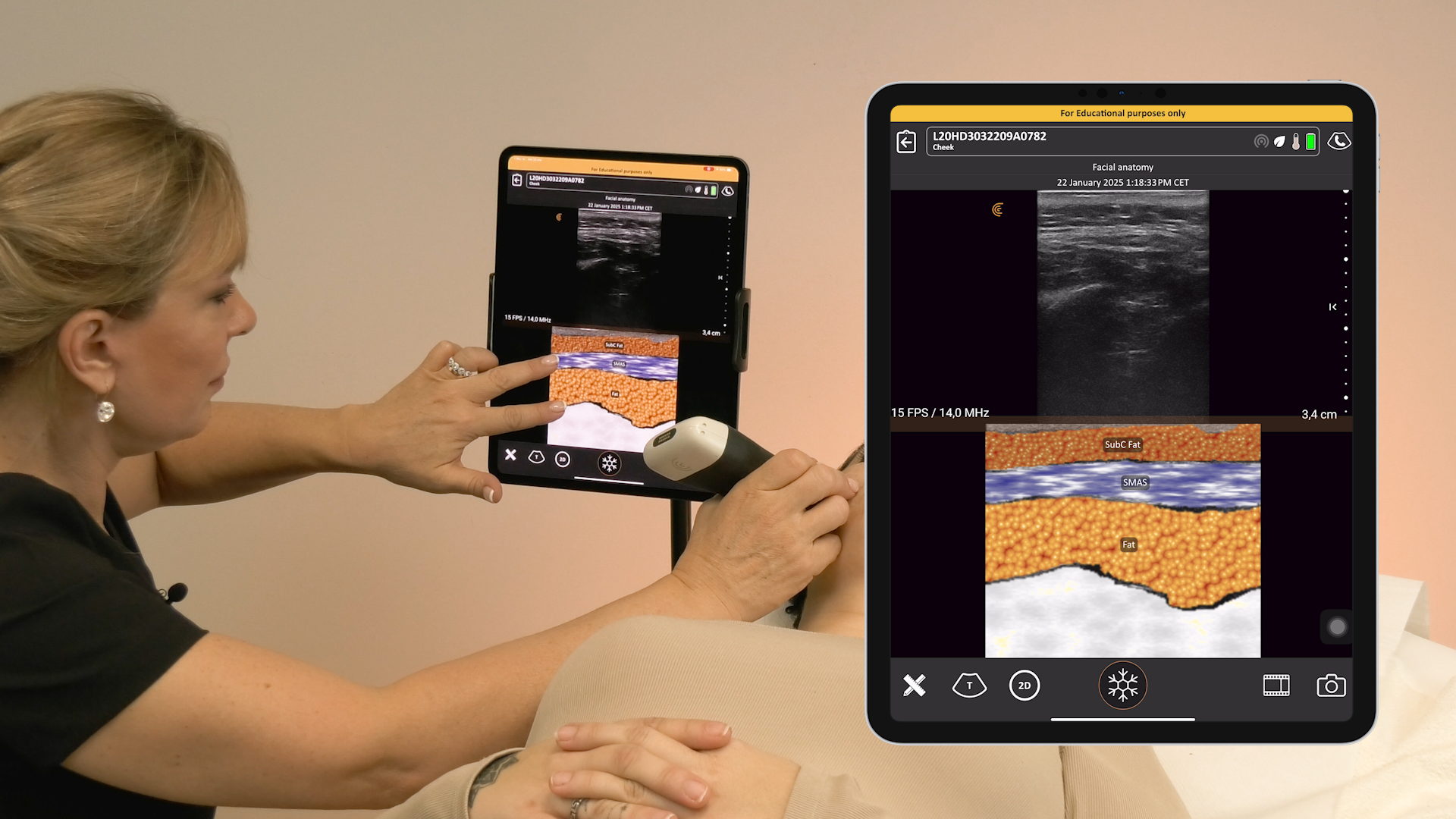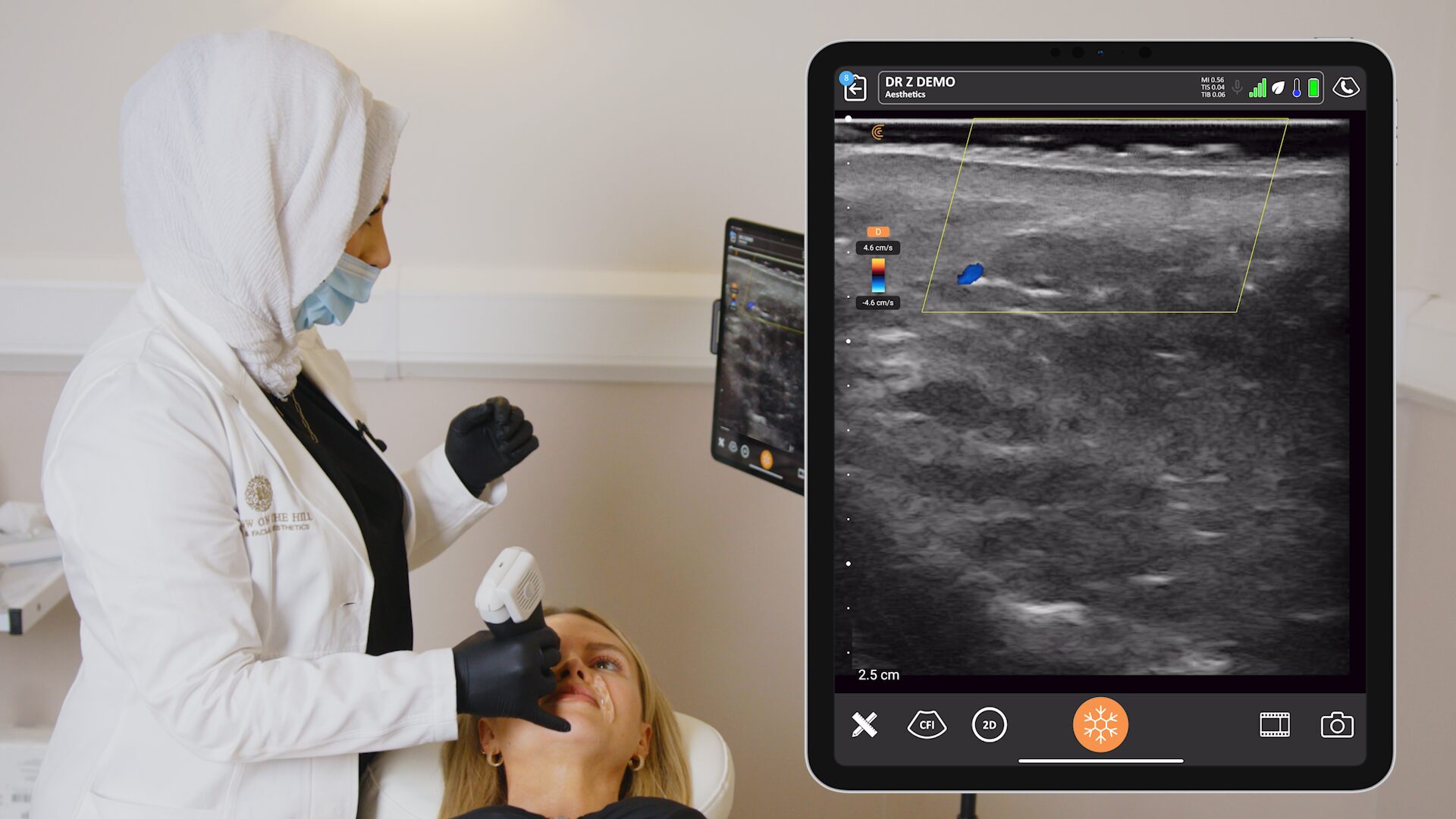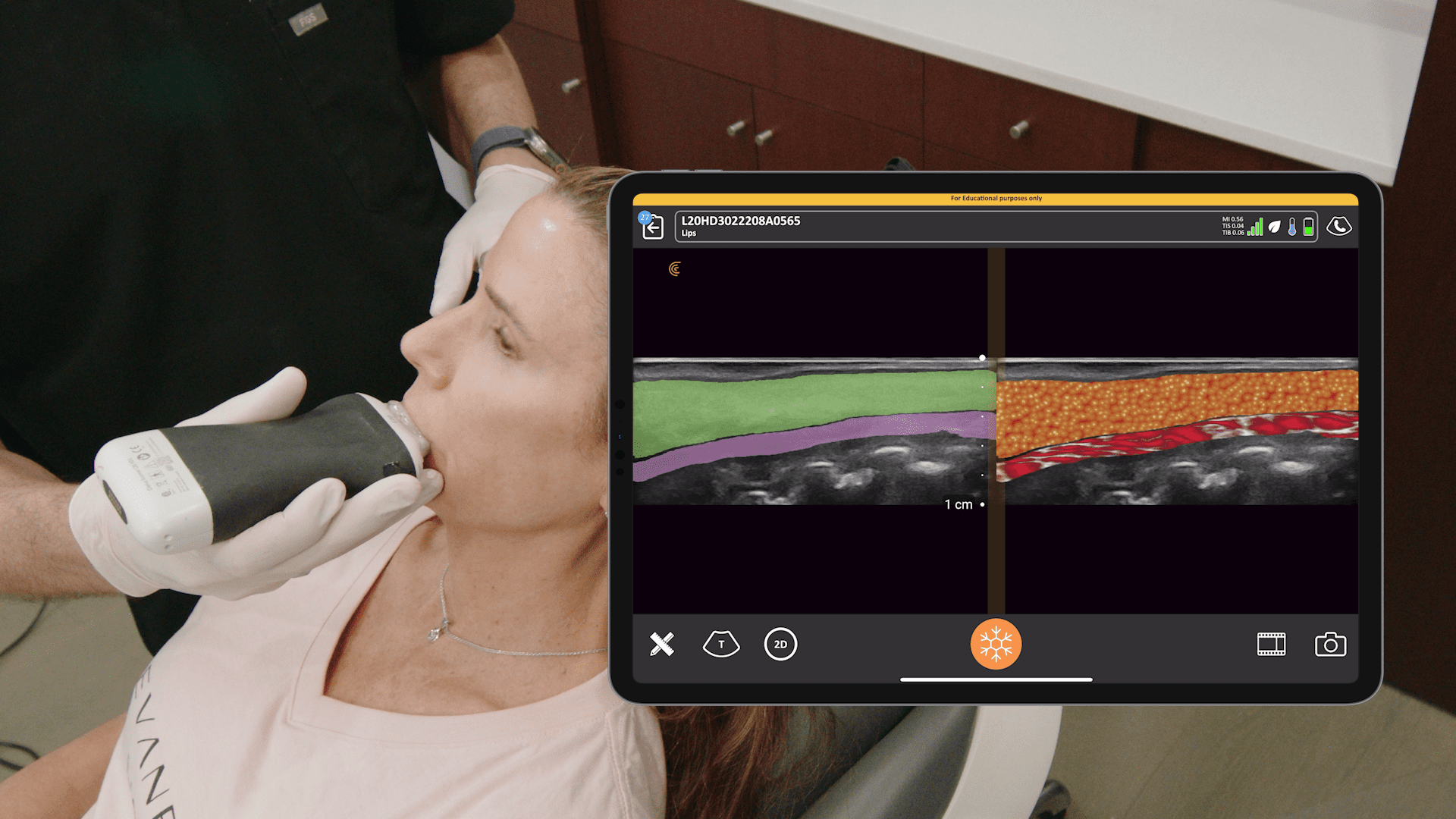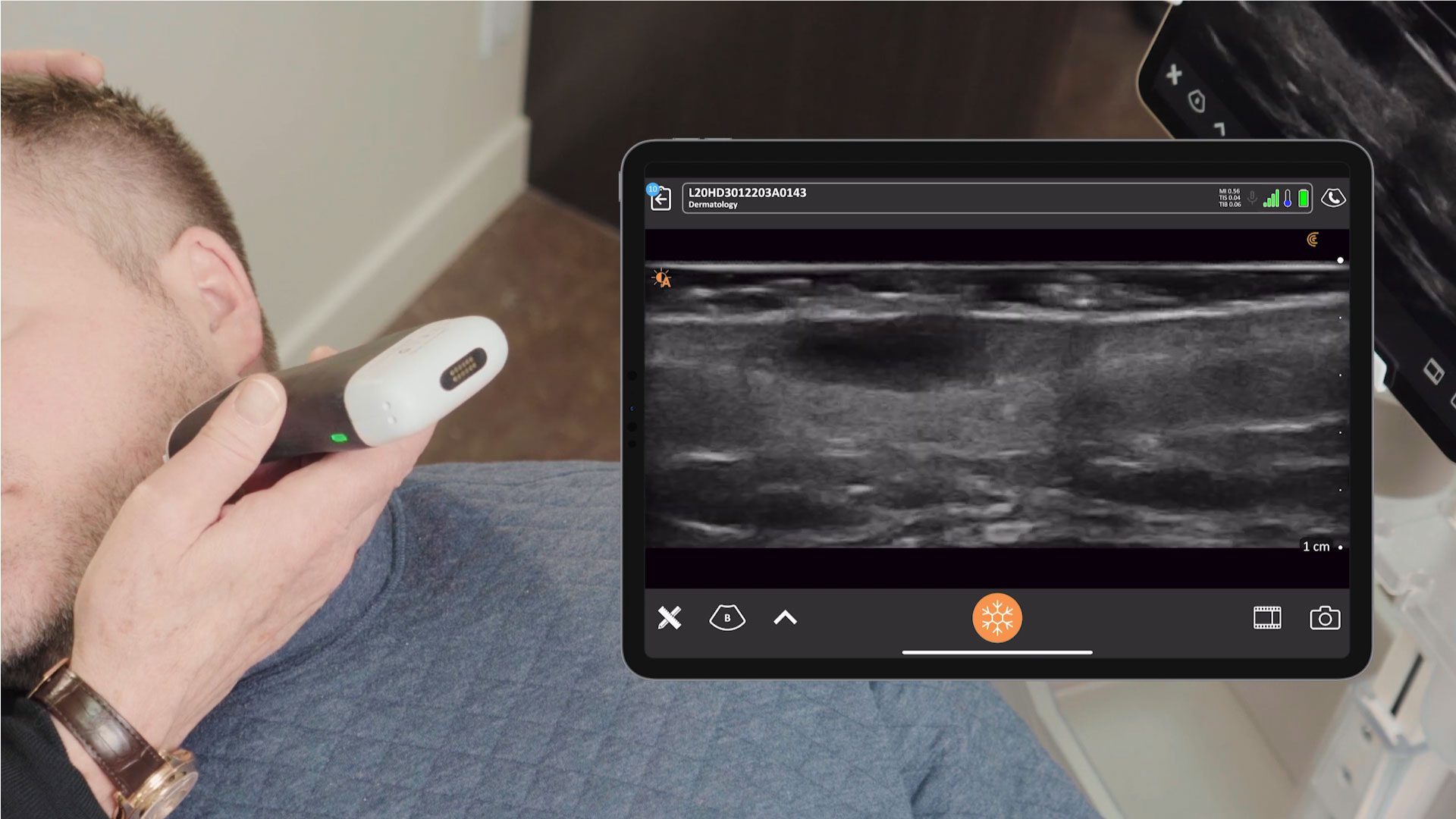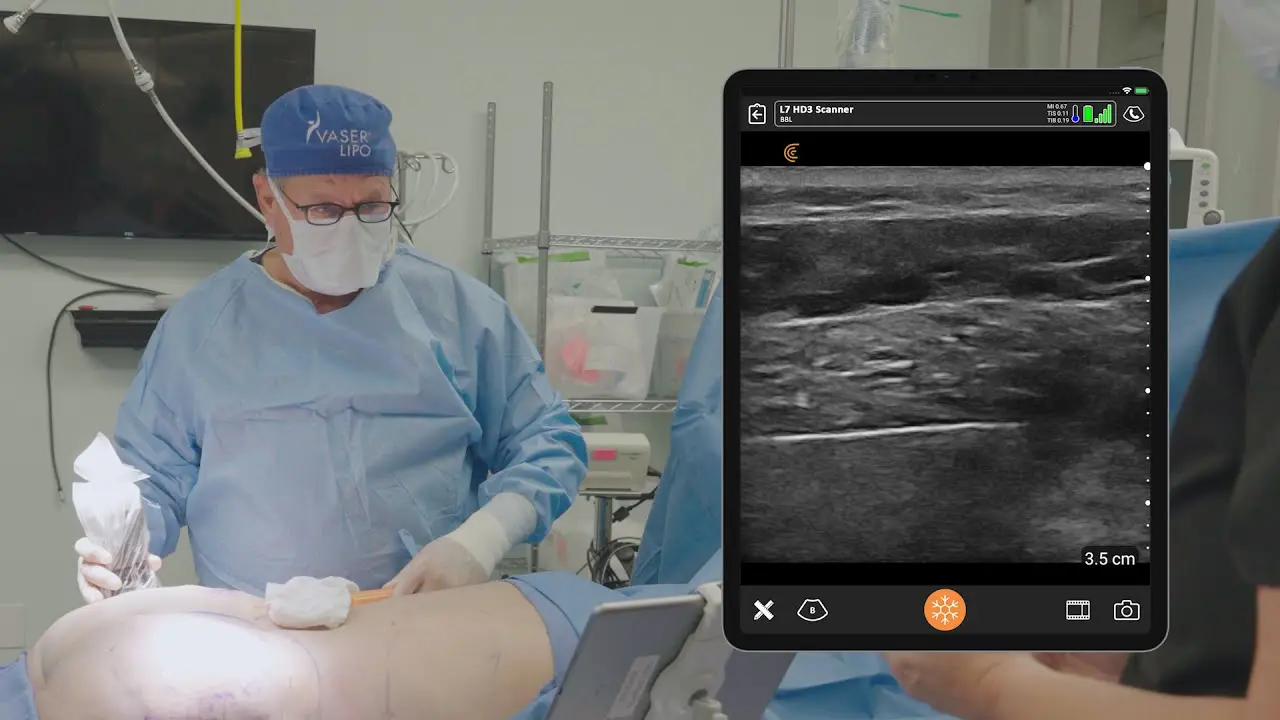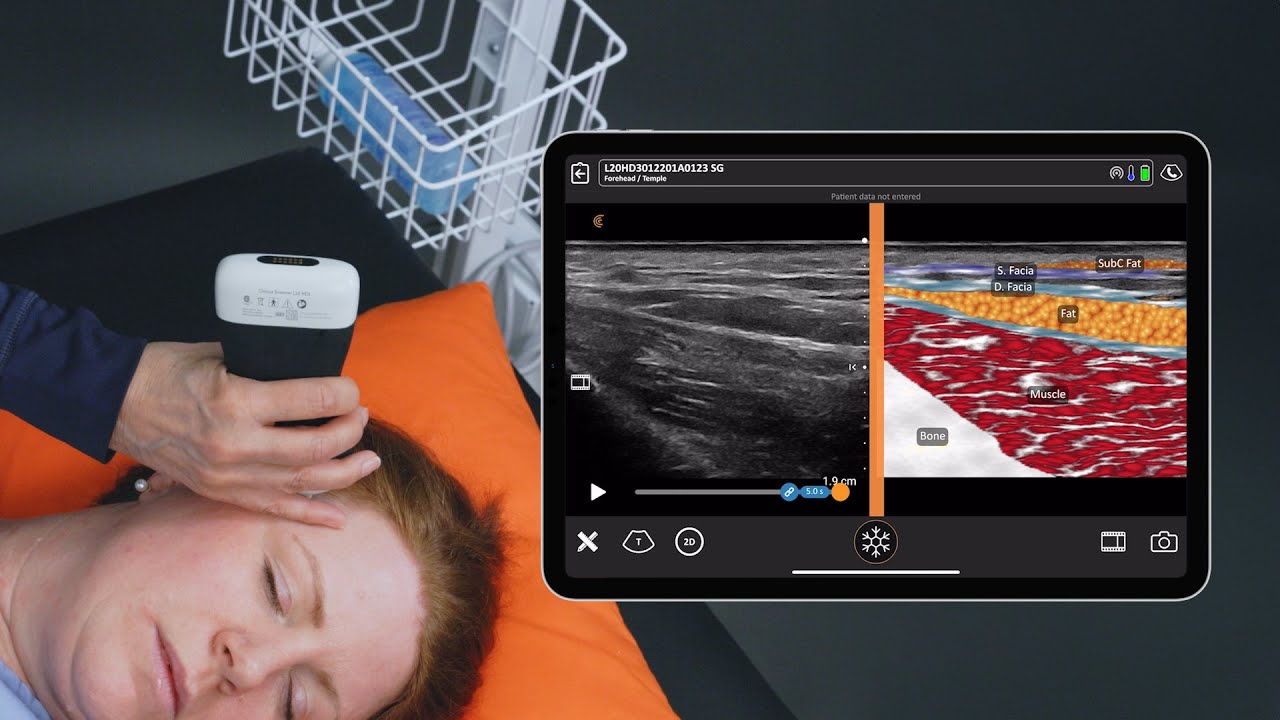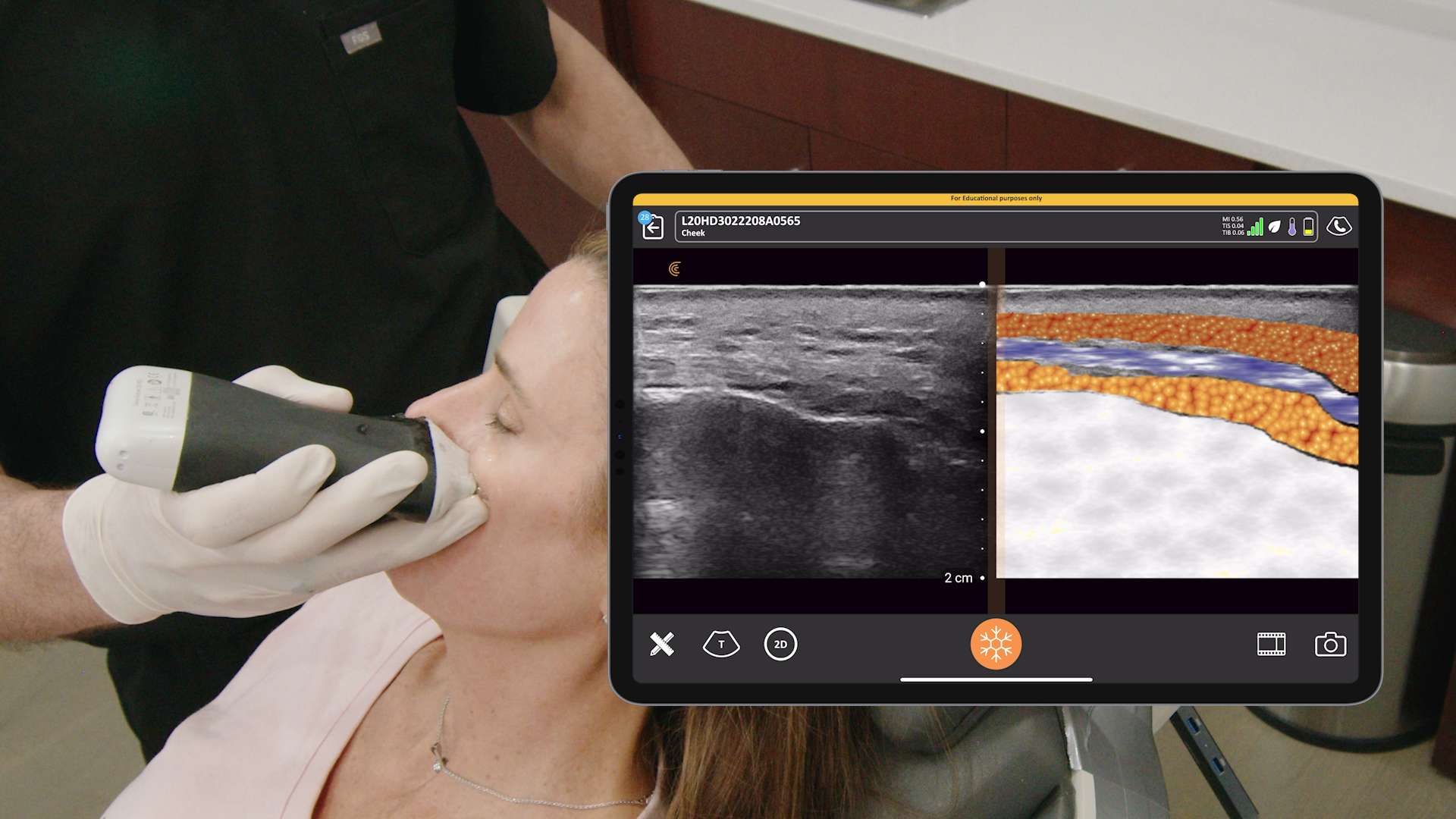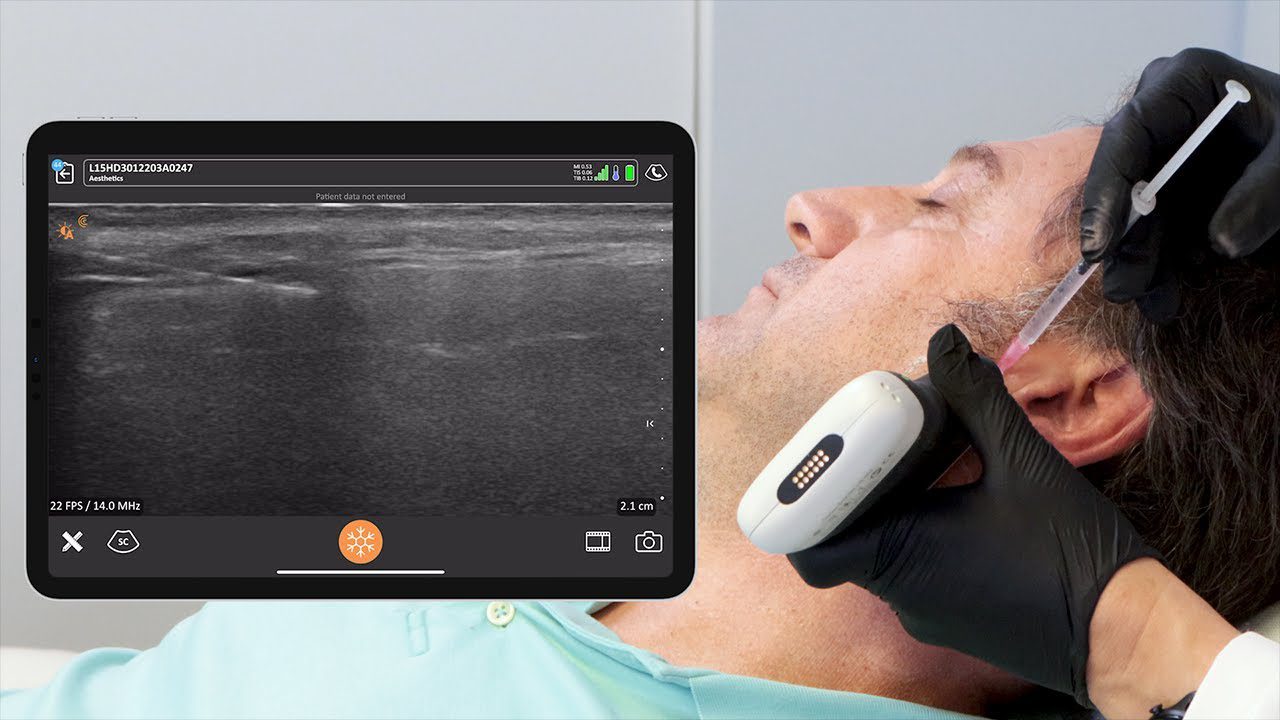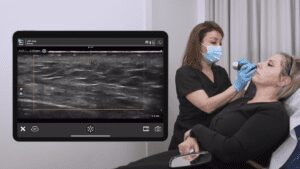We recently had the opportunity to interview Dr. Karina Ravera, a medical specialist in diagnostic imaging who practices aesthetic and reconstructive medicine in Buenos Aires, Argentina. Dr. Ravera has been performing cutaneous and soft tissue ultrasound for more than 20 years. She believes that ultrasound is fundamental for her daily practice. Read on for excerpts of our conversation, which has been translated from Spanish.
When did you start using ultrasound?
I started using skin and soft tissue ultrasound almost at the end of my medical residency in Diagnostic Imaging, where I had begun to study the degree of depth of involvement of some skin tumors. But then, assembling all this knowledge with the postgraduate course in Aesthetic Medicine, I began to see that each soft tissue filler gave different patterns. That is, each molecule had a different impact on the tissues at the ultrasound level. From there, the path became more and more exciting, so I never stopped using ultrasound to see my patients.
Why do you use ultrasound to examine every patient?
I can evaluate patients in another way, in a more exhaustive way, I can see previous fillings, I can see if there is any underlying pathology, I can evaluate the area to be treated in another way, I can measure each tissue plane in a millimetric and sub-millimetric way. In addition, every day I receive patients referred from other colleagues, to help diagnose with certainty what type of complication the patient has or what type of problem their tissue has.
How do you think portable ultrasound is changing the field of aesthetic medicine?
Skin and soft tissue ultrasound has radically changed the way we work in aesthetic medicine. I believe that one of the great fears in aesthetic medicine is vascular obstructions, to give an extreme example. So, with cutaneous ultrasound, one can perform vascular mapping, perform echo-guided procedures and therefore avoid this much-feared complication. But beyond that, there is a very large field to avoid problems or to improve our daily practice in aesthetic medicine with countless treatments. Let’s not forget that with high-resolution, high-definition skin ultrasound, we can measure every structure that makes up the different tissue planes sub-millimeter by sub-millimeter.
Please describe your experience with the Clarius HD3 handheld ultrasound scanner
This new version of Clarius HD3 is much more ergonomic. Therefore, when it comes to work, it makes it much easier for us to examine the patient. In addition, this ultrasound scanner is 30% smaller than the previous version and much lighter. If we compare other ultrasound scanners, for example, the type of ultrasound scanners that come with trolleys, which are very large, that have a cable, or with other ultrasound scanners that have a built-in computer. The way of working changes a lot with the new Clarius HD3, because being so small, so ergonomic and not having a cable, it has a great impact on the practicality and comfort at the time of performing the examinations on the patients.
How is the lack of wires an advantage?
Being able to have a wireless ultrasound scanner is very important. One of the fundamental points is the issue of asepsis. Since it does not have a cable, we do not have to be attentive to sterilizing cords and we can work on the patient without any type of concern. On the other hand, it gives us a lot of practicality and comfort to move within the same office or within the operating room or in different offices in the same clinic.
Does using Clarius improve procedure safety?
The use of Clarius ultrasound increases the safety of the procedures in several aspects and for several reasons. For example, when performing vascular mapping with Clarius ultrasound, we can detect arteries in the sub-millimeter range. In them we can see what trajectory and at what depth they are located with respect to the skin. Another point is that we can perform the injection of medicines or enzymes in an echo-guided way, in a very, very precise way because of the exquisiteness of our images. And another point is that we can echo-guide procedures with a program, for example, that has the needle enhancement, and we can see the entire needle trajectory and also perform very high-precision procedures.
How does ultrasound help provide the best patient care?
I can tell you that performing ultrasound and using Clarius ultrasound scanners will confer several very important aspects in our daily practice. It will allow professionals to perform procedures with great efficiency and safety, avoiding problems and avoiding complications. And another aspect to take into account, is that our patients feel much safer, they feel much more cared for. In short, what we can say is that when one uses ultrasound scans of this magnitude, one can perform high-precision aesthetic medicine.
Watch our video interview with Dr. Ravera, which was recorded in Spanish.
About Clarius Ultrasound for Facial Aesthetics
Clarius offers two high-frequency handheld ultrasound scanners that are suitable to see the fine detail required for facial aesthetics. With exceptional superficial imaging and the new advanced aesthetic preset, the Clarius L20 HD3 is the popular choice for facial aesthetics. It’s the only specialty-designed handheld ultrasound with an ultra-high frequency of 20 MHz. Wireless and affordable, it delivers exceptional superficial imaging to 4 cm with an easy-to-use app for your iOS or Android device.
Visit our aesthetics page to learn more or book a demo today.

